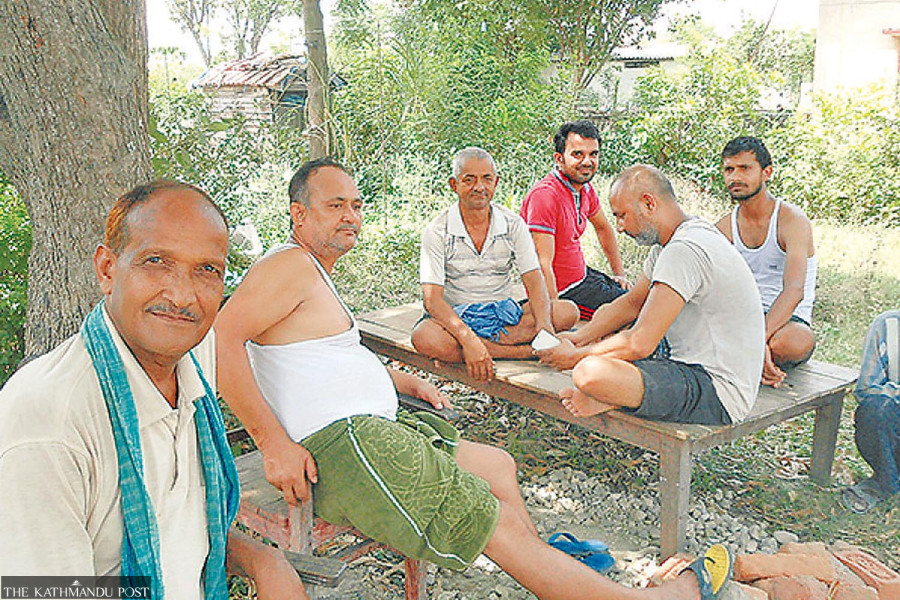Climate & Environment
Warning after sweltering heat causes distress across Tarai
The maximum temperature in most districts of the southern plains has crossed 38 degrees Celsius and 40 degrees in several others.
Arjun Poudel
People residing across the Tarai have been affected as temperature in the region has been rising by the day.
“It was not that unbearable until last week,” complained Harichandra Supak, a local from Krishnanagar Municipality of Kapilvastu district. “Now hot air starts blowing after 10 in the morning. And it is difficult to venture out.”
The maximum temperature in most districts across the Terai region has crossed 38 degrees Celsius. Likewise, the maximums of Kapilvastu, Rupandehi, Parsa, Bara, Sarlahi, Dhanusha, Saptari, Siraha among other districts have crossed 40 degrees Celsius.
According to the Meteorological Forecasting Division under the Department of Hydrology and Meteorology, the temperatures of many places in the central and eastern Tarai have soared above their average maximums for this time causing mild to moderate types of heat waves. But some places have witnessed extreme heat waves.
“The maximum temperature has risen by 3 degrees Celsius in most parts throughout the country than average for this time of year,” Dr Indira Kandel, senior divisional meteorologist at the Climate Analysis Section under the Department of Hydrology and Meteorology.
“Warm and dry weather conditions are expected to continue for the next couple of days in the Tarai region, as no rainfall activity is in sight.”
There are chances of light rainfall in mountainous and hilly regions on Wednesday and Thursday, but that does not help lower the Tarai heat.
The Met office also said mild and moderate intensity heat waves are expected in some parts of the Tarai. Officials said people should take precautions, if the maximum temperature in their place exceeds 40 degrees Celsius.
“Lack of rainfall has triggered incidents of forest fire and this has led to deterioration in the air quality. With smoke and haze covering the Kathmandu Valley and other places of the country,” reads the statement issued by the Department.
Bhairahawa recorded this year’s highest day temperature of 42.4 degrees Celsius on Tuesday. Janakpur recorded 40.8 degrees Celsius, Nepalgunj 40.5, Simara 40.3, Dhangadhi 38.5, Dipayal 38.2, and Biratnagar recorded 38 degrees Celsius, according to the Meteorological Forecasting Division. The maximum temperature for Kathmandu was 32.7 degrees Celsius.
“Temperatures in the Tarai are always hot compared to other parts of the country, but when the weather becomes extremely hot all of a sudden, it becomes too difficult,” complained Kameshwar Prasad Dube, information officer at the Krishnanagar Municipality. “We used to witness this kind of hot weather only in the second and third week of May. But this kind of heat in the second week of April is unprecedented.”
The Lumbini provincial authorities have advised people not to come out of their homes in the afternoon, take sufficient fluids and water to remain hydrated so as to avoid adverse effects of the scorching heat. Locals, however, complained that these suggestions are good only for those who can afford to stay at home.
“How is it possible for the poor to stay indoors when they have a family to feed,” said Brijesh Kumar Chaudhary, a local of Maharajgunj Rural Municipality in Kapilvastu. “It is easier said than done. No one asks us about our problems, but everyone has ready-made advice and suggestions.”
Health authorities in Lumbini Province said that temperature has risen all of sudden in the districts of Terai region of the Province.
“Extreme heat waves have not yet started, but if the temperature keeps rising we cannot rule out such a situation,” said Dr Pushpa Raj Poudel, spokesperson at the Ministry of Health and Population of the Lumbini Province. “We have also expected a rise in the number of people suffering from fever, dehydration, urine infections and heat stroke.”
Exposure to excessive heat usually results in headache, nausea, weakness, dizziness and fainting. Heat-related illnesses include heat stroke, heat exhaustion, heat cramps and heat syncope (fainting). Heat stroke is the most severe form of heat-related illness and requires immediate medical attention.
The provincial health ministry has directed the agencies concerned to prepare accordingly for any untoward situation that could be caused by rising temperatures.
The World Health Organisation said that heatwaves are among the most dangerous of natural hazards, but rarely receive adequate attention because their death toll and destruction are not always immediately obvious.
People’s exposure to heat is increasing due to climate change. Globally, extreme temperature events are observed to be increasing in their frequency, duration and magnitude, according to the UN health body.
Climate scientists blamed the impact of climate change for early onset and intense summer.
The average annual maximum temperature of Nepal has risen by 0.056 degrees Celsius, according to a study conducted by the Department of Hydrology and Meteorology (DOHM) in 2017.
The study shows most districts have witnessed increasing temperatures annually.
“Extreme climatic events including low rainfall, excessive rainfall, flooding, and prolonged drought fuelled by erratic weather patterns have become more pronounced and frequent of late,” said Raju Pandit Chhetri, director of the Prakriti Resources Centre, which advocates environment-friendly policies and development practices. “And as usual, the approach of the authorities concerned are reactive. Unless we change our approach from reactive to proactive, we will have to continuously bear the brunt of extreme weather related effects.”
Currently, many places throughout the country have been witnessing smoke and haze caused by massive forest fires. Experts say forest fires are neither a new phenomenon nor unexpected in the country.
“When winter rainfall did not happen, it was known that incidents of forest fires would increase, but we did not take mitigation measures,” said Pandit. “Multiple problems will arise from the scorching heat in the Tarai, which is also the food basket of the country, but no one appears to be concerned about minimising the adverse impacts.”




 19.12°C Kathmandu
19.12°C Kathmandu










